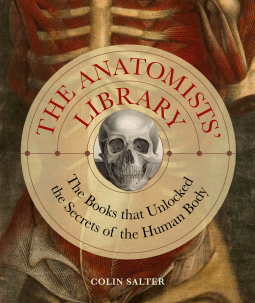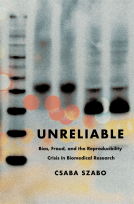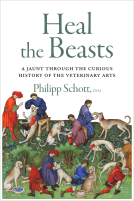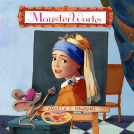
The Anatomists' Library
The Books that Unlocked the Secrets of the Human Body
by Colin Salter
This title was previously available on NetGalley and is now archived.
Buy on Amazon
Buy on Waterstones
*This page contains affiliate links, so we may earn a small commission when you make a purchase through links on our site at no additional cost to you.
Send NetGalley books directly to your Kindle or Kindle app
1
To read on a Kindle or Kindle app, please add kindle@netgalley.com as an approved email address to receive files in your Amazon account. Click here for step-by-step instructions.
2
Also find your Kindle email address within your Amazon account, and enter it here.
Pub Date 15 Aug 2023 | Archive Date 20 Jun 2023
Quarto Publishing Group – Ivy Press | Ivy Press
Talking about this book? Use #TheAnatomistsLibrary #NetGalley. More hashtag tips!
Description
The Anatomist's Library is a fascinating chronological collection of the best anatomical books from six centuries, charting the evolution of both medical knowledge and illustrated publishing.
There is a rich history of medical publishing across Europe with outstanding publications from Germany, France, Italy, Netherlands, Spain, UK, and also many from Persia and Japan.
Because of the high value of accurate medical textbooks, it was these works that pushed the boundaries of illustrated publishing. They commanded the expert illustrators and skilled engravers and hence didn’t come cheaply. They were treasured by libraries and their intrinsic worth has meant that there is an incredible wealth of beautifully preserved historic examples from the 15th century onwards
The enduring popularity of Gray’s Anatomyhas shown that there is a long-term interest in the subject beyond the necessity of medical students to learn the modern equivalent – the 42nd edition (2020) – from cover to cover. But Englishman Henry Gray was late in the field and never saw the enduring success of his famous work. Having first published the surgeon’s reference book in 1858, he died in 1861 after contracting smallpox from his nephew (who survived). He was just 34.
Gray was following on from a long tradition of anatomists starting with Aristotle and Galen whose competing theories about the human body dominated early medicine. However they did not have the illustrative skills of Leonardo da Vinci who was trained in anatomy by Andrea del Verrocchio. In 1489 Leonardo began a series of anatomical drawings depicting the human form. His surviving 750 drawings (from two decades) represent groundbreaking studies in anatomy. However none of Leonardo's Notebooks were published during his lifetime, they only appeared in print centuries after his death.
Brussels-born Andries van Wesel (Andreas Vesalius) professor at the University of Padua is deemed to be the founder of modern anatomical reference with his 1543 work De Humani Corporis Fabrica Libri Septem ("On the fabric of the human body in seven books"). An Italian contemporary was Bartolomeo Eustachi who supported Galen’s medical theories. Among other discoveries he correctly identified the Eustachian tube and the arrangement of bones in the inner ear. His Anatomical Engravings were completed in 1552, nine years after Vesalius’s great work, but remained unpublished until 1714.
These are just two entries in a book brimming with an abundance of important illustrated works – with some more primitive examples from the 15th century, up to the 42nd edition of Gray’s in the 21st.
There is a rich history of medical publishing across Europe with outstanding publications from Germany, France, Italy, Netherlands, Spain, UK, and also many from Persia and Japan.
Because of the high value of accurate medical textbooks, it was these works that pushed the boundaries of illustrated publishing. They commanded the expert illustrators and skilled engravers and hence didn’t come cheaply. They were treasured by libraries and their intrinsic worth has meant that there is an incredible wealth of beautifully preserved historic examples from the 15th century onwards
The enduring popularity of Gray’s Anatomyhas shown that there is a long-term interest in the subject beyond the necessity of medical students to learn the modern equivalent – the 42nd edition (2020) – from cover to cover. But Englishman Henry Gray was late in the field and never saw the enduring success of his famous work. Having first published the surgeon’s reference book in 1858, he died in 1861 after contracting smallpox from his nephew (who survived). He was just 34.
Gray was following on from a long tradition of anatomists starting with Aristotle and Galen whose competing theories about the human body dominated early medicine. However they did not have the illustrative skills of Leonardo da Vinci who was trained in anatomy by Andrea del Verrocchio. In 1489 Leonardo began a series of anatomical drawings depicting the human form. His surviving 750 drawings (from two decades) represent groundbreaking studies in anatomy. However none of Leonardo's Notebooks were published during his lifetime, they only appeared in print centuries after his death.
Brussels-born Andries van Wesel (Andreas Vesalius) professor at the University of Padua is deemed to be the founder of modern anatomical reference with his 1543 work De Humani Corporis Fabrica Libri Septem ("On the fabric of the human body in seven books"). An Italian contemporary was Bartolomeo Eustachi who supported Galen’s medical theories. Among other discoveries he correctly identified the Eustachian tube and the arrangement of bones in the inner ear. His Anatomical Engravings were completed in 1552, nine years after Vesalius’s great work, but remained unpublished until 1714.
These are just two entries in a book brimming with an abundance of important illustrated works – with some more primitive examples from the 15th century, up to the 42nd edition of Gray’s in the 21st.
Available Editions
| EDITION | Other Format |
| ISBN | 9780711280748 |
| PRICE | US$40.00 (USD) |
| PAGES | 272 |
Available on NetGalley
NetGalley Shelf App (PDF)
Download (PDF)
Readers who liked this book also liked:
The Penford Manor Murders
Fiona Veitch Smith
General Fiction (Adult), Historical Fiction, Mystery & Thrillers
Fiona Veitch Smith
General Fiction (Adult), Historical Fiction, Mystery & Thrillers
Dexter
Bonnie Kelso (co-author and illustrator), Kentee Pasek (co-author)
Children's Nonfiction, Entertainment & Pop Culture
Bonnie Kelso (co-author and illustrator), Kentee Pasek (co-author)
Children's Nonfiction, Entertainment & Pop Culture


















